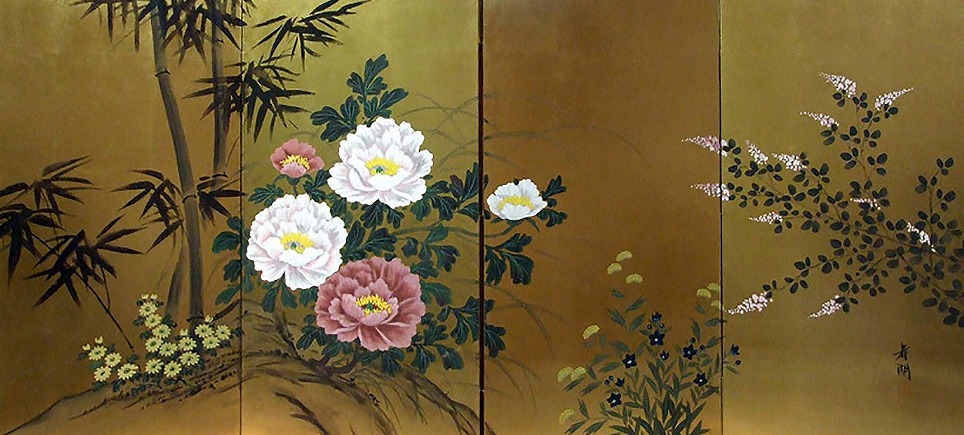History of Byobu

Screen Origins
Japanese screens, known as byobu in Japanese, originated in China as far back as the Han dynasty (206 B.C. - 220 A.D.). As byobu literally means "wind wall," the original purpose of the screen was to block drafts in traditional open-layout Japanese homes. The concept first arrived in Japan in the late Nara Period, around the eight century. During the Nara Period and subsequent Heian Period (794-1185), byobu design progressed from a standing single-panel screen to multiple-paneled folding screens to suit Japanese tastes and needs.
Japanese Innovation
In the Muromachi Period (1392-1568), as screens became more popular and common, the Japanese applied their own developments to the traditional Chinese design. The metal hinges were replaced with paper hinges, which allow folding in both directions, and make for a lighter, stronger design. Paper hinges are also more aesthetically pleasing, as the space between panels is vastly reduced, meaning that the painting can flow from panel to panel. At the same time, the frame construction became much lighter through use of a bamboo lattice frame and washi paper as the covering.
Screens as Status Symbols
In the subsequent Azuchi-Momoyama (1568-1603) and Edo (1603-1868) Periods, the popularity of byōbu continued to increase, and samurai lords displayed screens in their homes as symbols of wealth and power. As a result, byōbu began to be made using striking gold leaf backgrounds and more colorful painting techniques. The sheen from the gold leaf covering also helped bring light into the otherwise dark castles and homes of the period.
Present Day
Screen making has been an industry in decline ever since the late Edo Period. These days, there are very few places still making authentic byōbu, and many are either manufactured cheaply by machine in Tokyo (a city without a screen-making tradition) or even imported from China. The maker of our screens, Iohara Seijudo in Kyoto, is a part of a family-run business now in its third generation. His traditional techniques are unique in that they are the only studio in Japan that manufactures screens from start to finish entirely by hand. See our guide to the making of screens for an overview of the manufacturing process.